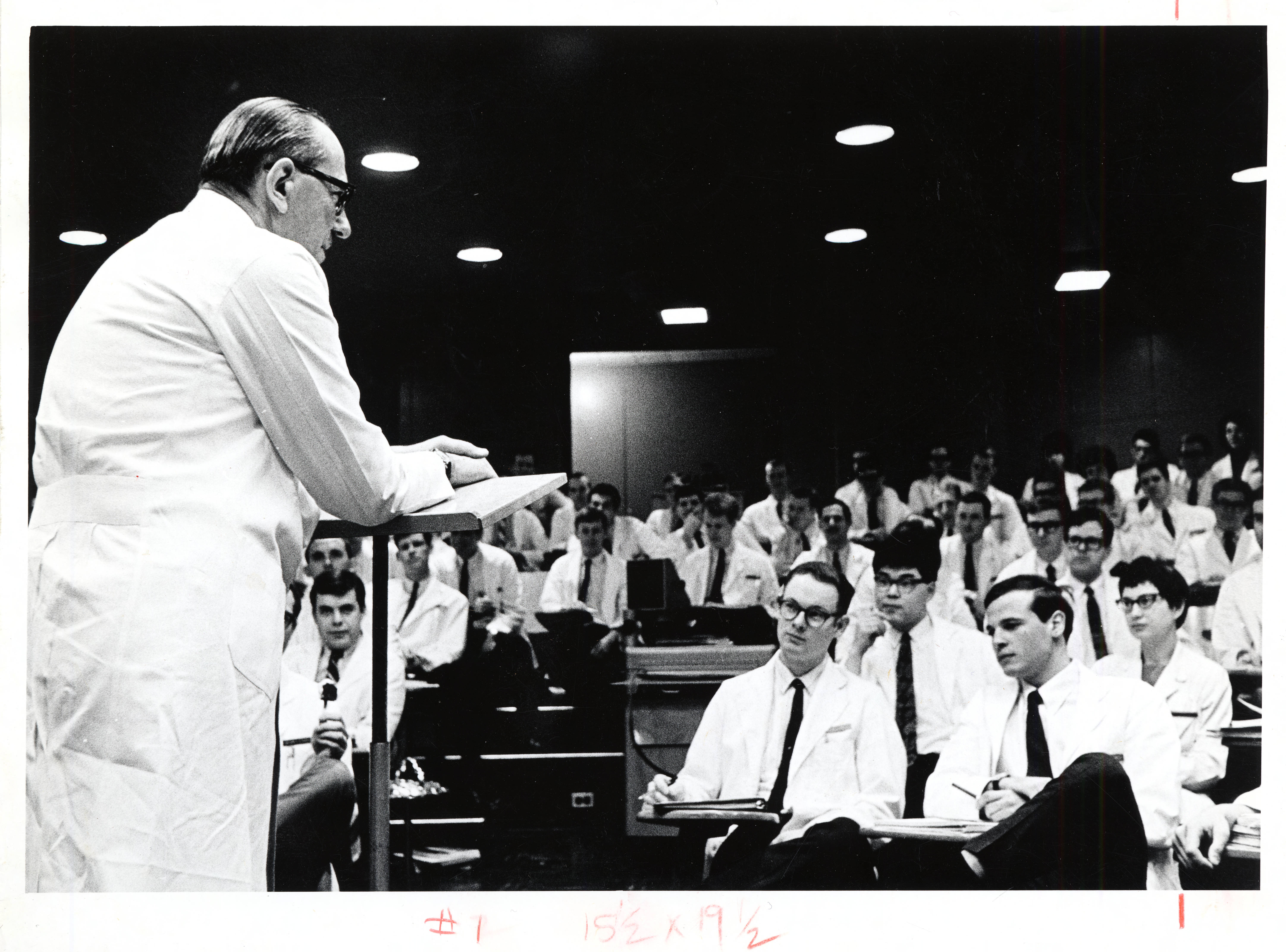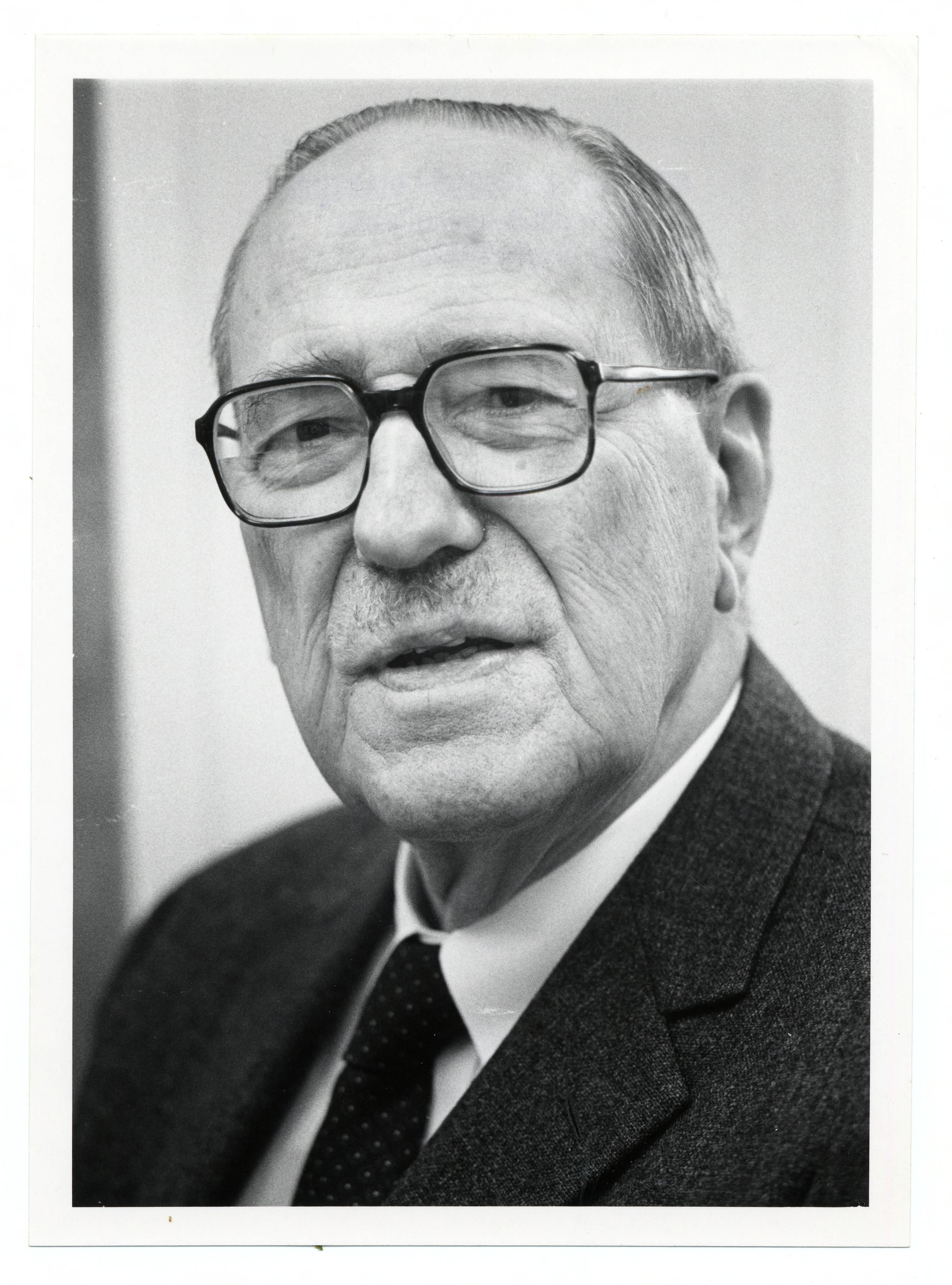Internationally recognized internist Howard Phelps Lewis made major contributions to American medical education and practice through his excellent diagnostic skills, his strict adherence to the highest standards in medical education, and his dedication to the advancement of the profession through his work with the American College of Physicians, the American Board of Internal Medicine, and other national organizations.
Born on February 18, 1902, San Francisco, Lewis moved with his family to Marshfield (now Coos Bay) when he was twelve years old. He attended Oregon State College, where he received a bachelor’s degree in chemical engineering in 1924, and the University of Oregon Medical School (UOMS), where he received a medical degree in 1930. While still a medical student, Lewis served as an instructor in anatomy. He completed his internship and internal medicine residency at Multnomah County Hospital in 1932. He subsequently joined the Department of Medicine at UOMS and began a private practice in the city.
Lewis joined the armed forces in 1942 and rose to the rank of colonel, serving as chief of the medical service at Rhoads General Hospital in New York. Returning to Oregon from war service in 1947, he was named chair of the UOMS Department of Medicine. In his twenty years as chair, Lewis helped the department grow from two to forty positions. He recruited several division chiefs with strong research backgrounds, including Herbert Griswold, Monte Greer, John Benson, Walter Lobitz, George Saslow, and Roy Swank, and then met with them weekly to improve their teaching skills.
Remembered as an exceptionally gifted teacher, Lewis was responsible for the Gold-Headed Cane Award, given annually to a medical student in recognition of scientific and humanistic excellence. He believed that rigorous medical training was a necessary corollary to physicians’ duty to patients, noting in 1983 that “we have to keep constantly in front of us the idea that standard-setting is not done for us; it’s done for the public.”
Lewis contributed to American medicine through his work with the American College of Physicians, serving as president (1959-1960) and as regent (1960-1963). For his work, he was granted master status in 1963, awarded the Alfred Stengel Memorial Award for outstanding service in 1966, and designated President Emeritus in 1985. A 1938 diplomate of the American Board of Internal Medicine, he served for nine years on the board and chaired the group from 1959 to 1961. His simultaneous tenure as president of the American College of Physicians and chair of the American Board of Internal Medicine gave him unprecedented influence over the direction of American medicine during a period of great growth.
In an era when medical education was changing rapidly as a result of the expansion of medical knowledge and the rise of research, Lewis made fundamental contributions to modernizing the teaching of medicine in America. Upon Lewis’s retirement in 1972, former student J. David Bristow, M.D., wrote that his “ every action as physician, teacher, administrator, or as a national figure in medicine has led to the improvement of care for the sick…. [He] is the finest example of the clinical teacher, a model which fellow physicians try so hard to emulate.”
Lewis died on April 24, 1985.
-
![]()
Howard P. "Hod" Lewis, M.D., lecturing to a group of medical students.
Courtesy Oregon Health & Sciences University Digital Collections
-
![]()
Howard P. Lewis, M.D., c.1980.
Courtesy Oregon Health & Sciences University Digital Collections
Map This on the Oregon History WayFinder
The Oregon History Wayfinder is an interactive map that identifies significant places, people, and events in Oregon history.
Further Reading
Benson, John A. “Memorial: Howard Phelps Lewis.” Transactions of the American Clinical and Climatological Association, 1986; 97: xlvii–xlix.
Bristow, J. David. “Dr. Howard P. Lewis: tribute to a teacher.” Medical Center News (Feb. 1972).
Macht, Madison. “Large and noble lines: the life of Howard P. Lewis, American College of Physicians president, 1959-1960.” The Pharos 72.4 (Summer 2009): 24-31.


